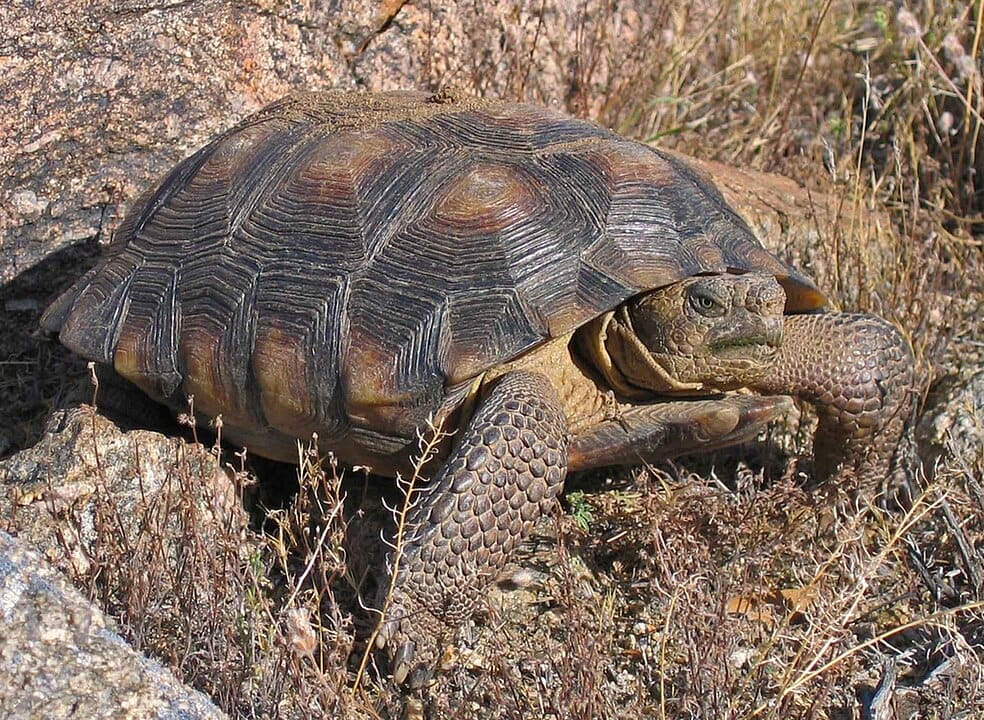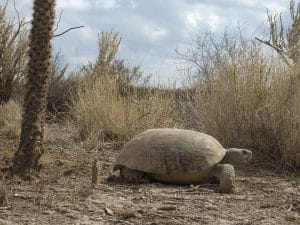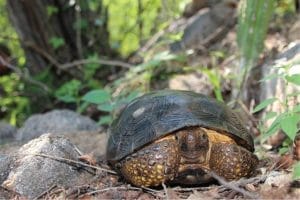Gopherus morafkai (Sonoran Desert Tortoise)
Home > Turtle Database > Gopherus morafkai (Sonoran Desert Tortoise)

Gopherus morafkai, commonly known as the Sonoran Desert Tortoise, is a hardy, adaptable tortoise species native to the deserts of the southwestern United States and northern Mexico. Known for its resilience in arid environments, this species is well-adapted to extreme heat and limited water availability.
Native Turtle Species Map – Find Turtles by Region
Scientific Classification
- Kingdom: Animalia
- Phylum: Chordata
- Class: Reptilia
- Order: Testudines
- Family: Testudinidae
- Genus: Gopherus
- Species: Gopherus morafkai
Common Names
- Sonoran Desert Tortoise
- Morafka’s Desert Tortoise
This Hilarious Turtle Book Might Know Your Pet Better Than You Do
Let’s be real—most turtle care guides feel like reading a textbook written by a sleep-deprived zookeeper.
This one’s not that.
Told from the snarky point of view of a grumpy, judgmental turtle, 21 Turtle Truths You’ll Never Read in a Care Guide is packed with sarcasm, sass, and surprisingly useful insights.
And hey—you don’t have to commit to the whole thing just yet.
Grab 2 free truths from the ebook and get a taste of what your turtle really thinks about your setup, your food choices, and that weird plastic palm tree.
It’s funny, it’s honest, and if you’ve ever owned a turtle who glares at you like you’re the problem—you’ll feel seen.
Identification
Description
The Sonoran Desert Tortoise has a high-domed, rugged shell that ranges in color from dark brown to grayish, helping it blend into the rocky desert landscapes. Adults typically grow between 10 and 14 inches in length and have stout, elephant-like limbs designed for digging.
Sexual Dimorphism
Males tend to have longer tails, a more concave plastron (underside of the shell), and slightly larger body sizes compared to females. The males also possess longer gular (throat) shields that they use during fights.
Check more turtles from the Gopherus genus
Native Origin and Distribution
Geographical Range
This tortoise is primarily found in the Sonoran Desert region, spanning southern Arizona and Sonora, Mexico. Its range covers rocky foothills and desert slopes, often at elevations between 500 and 5,000 feet.
Preferred Habitat
Sonoran Desert Tortoises thrive in rugged, rocky environments with sparse vegetation. They prefer slopes and foothills with adequate cover, burrows, and rock crevices, where they can escape the intense desert heat and hide from predators.
Behavior
Feeding Habits
These tortoises are herbivores, consuming a variety of desert plants, including grasses, cacti, and wildflowers. They can store water in their bladders and rely on these reserves to survive the dry season.
Predators
Natural predators include coyotes, ravens, and occasionally mountain lions. Juvenile tortoises, with softer shells, are especially vulnerable to predation by birds and small mammals.
Reproduction
Breeding Season
Breeding typically occurs between late summer and early fall, aligning with the monsoon season to maximize food availability.
Reproductive Method
Females lay clutches of 3 to 12 eggs, usually in sandy or loose soil. Hatchlings emerge after about 3 to 4 months and are fully independent.
Conservation
Extinction Status
Gopherus morafkai is listed as “Vulnerable” by the International Union for Conservation of Nature (IUCN).
Threats
The main threats include habitat destruction, vehicle collisions, and diseases like Upper Respiratory Tract Disease (URTD). Illegal pet trade also impacts their populations.
Conservation Measures
Conservation efforts include habitat protection, legal restrictions on collection, and public awareness campaigns to reduce human impacts.
Economic Importance
The Sonoran Desert Tortoise plays a role in desert ecosystems by aiding in plant dispersal through its feeding habits. Its presence also supports eco-tourism, as many people visit the Sonoran Desert to observe native wildlife.
Interesting Facts
- Sonoran Desert Tortoises can survive for over a year without water by storing it in their bladders.
- They dig burrows and hide under rocks to regulate body temperature, as desert temperatures can exceed 110°F.
- Each tortoise can dig several burrows within its home range, sometimes sharing these shelters with other species like snakes and small mammals.

About Author
Muntaseer Rahman started keeping pet turtles back in 2013. He also owns the largest Turtle & Tortoise Facebook community in Bangladesh. These days he is mostly active on Facebook.














